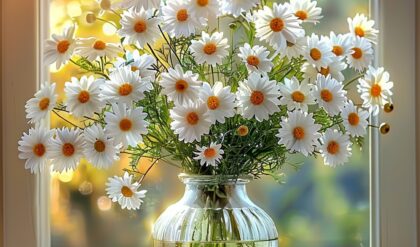Dahlias, with their captivating beauty and diverse forms, stand as living testaments to nature’s artistry. These remarkable flowers, belonging to the genus Dahlia, have captivated gardeners, artists, and nature enthusiasts for centuries. From their humble origins in Central America and Mexico to their current status as beloved garden staples worldwide, dahlias have woven themselves into the fabric of horticultural history and cultural significance. This article delves into the multifaceted world of dahlias, exploring their rich symbolism, cultivation techniques, and the profound lessons they offer about life, resilience, and the celebration of individuality.

The Origins and History of Dahlias
Ancient Roots in Mesoamerica
The story of dahlias begins in the fertile lands of Central America and Mexico, where these plants have thrived for millennia. Indigenous peoples of these regions were the first to recognize the dahlia’s value, not just for its aesthetic appeal but also for its practical uses. The Aztecs, in particular, cultivated dahlias for their edible tubers and medicinal properties. These early cultivators laid the groundwork for the dahlia’s journey from a wild plant to a cultivated wonder.
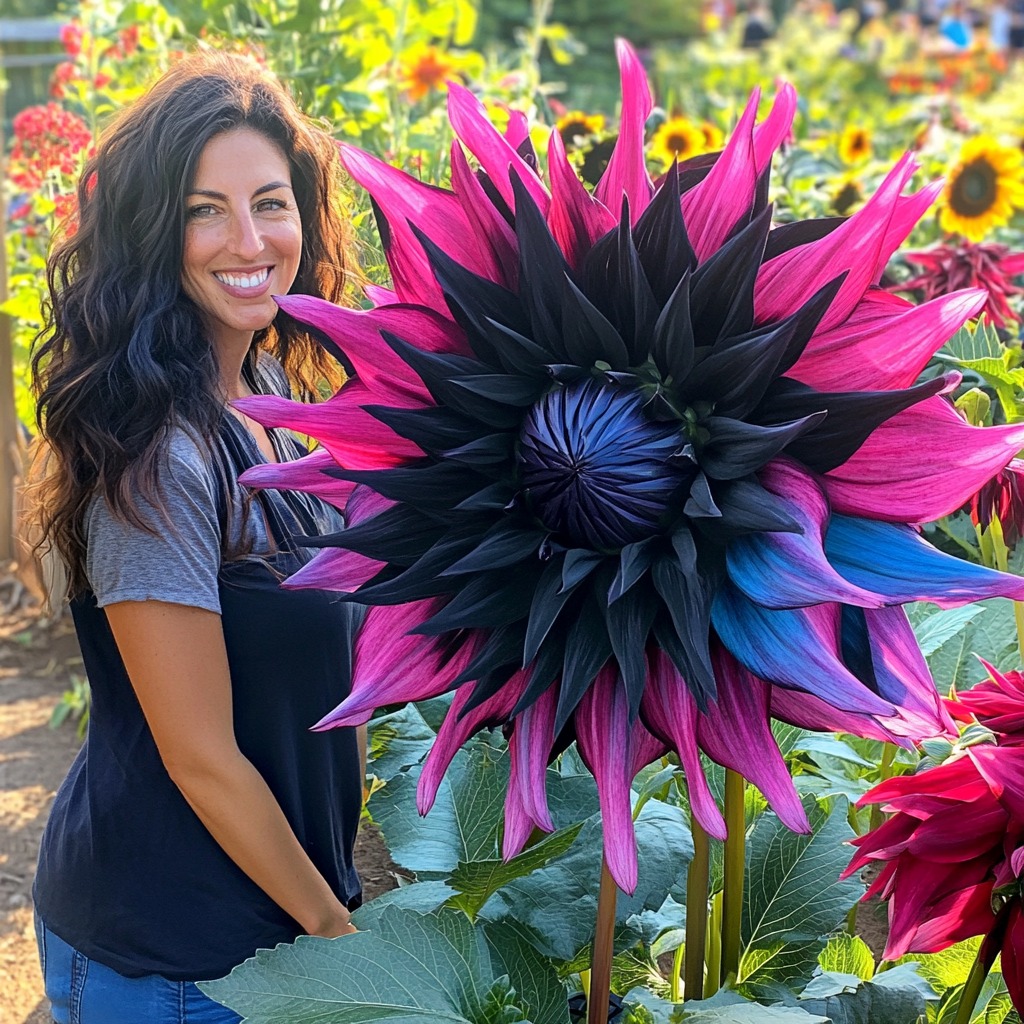
Archaeological evidence suggests that dahlias were an integral part of Mesoamerican culture long before European contact. Cave paintings and artifacts depict flowers resembling dahlias, hinting at their significance in ancient rituals and daily life. This deep-rooted history adds layers of cultural importance to the dahlia, making it more than just a pretty flower but a living link to ancient civilizations.
European Discovery and Botanical Classification
The dahlia’s introduction to the Western world marks a fascinating chapter in botanical history. Spanish conquistadors, during their explorations of the New World in the 16th century, encountered these striking flowers and brought specimens back to Europe. However, it wasn’t until the late 18th century that dahlias gained significant attention in European botanical circles.
In 1789, the director of the Royal Gardens of Madrid, Antonio José Cavanilles, received dahlia seeds from Mexico. He successfully grew these plants and named the genus Dahlia in honor of Swedish botanist Anders Dahl. This marked the beginning of the dahlia’s scientific classification and its entry into formal botanical study.
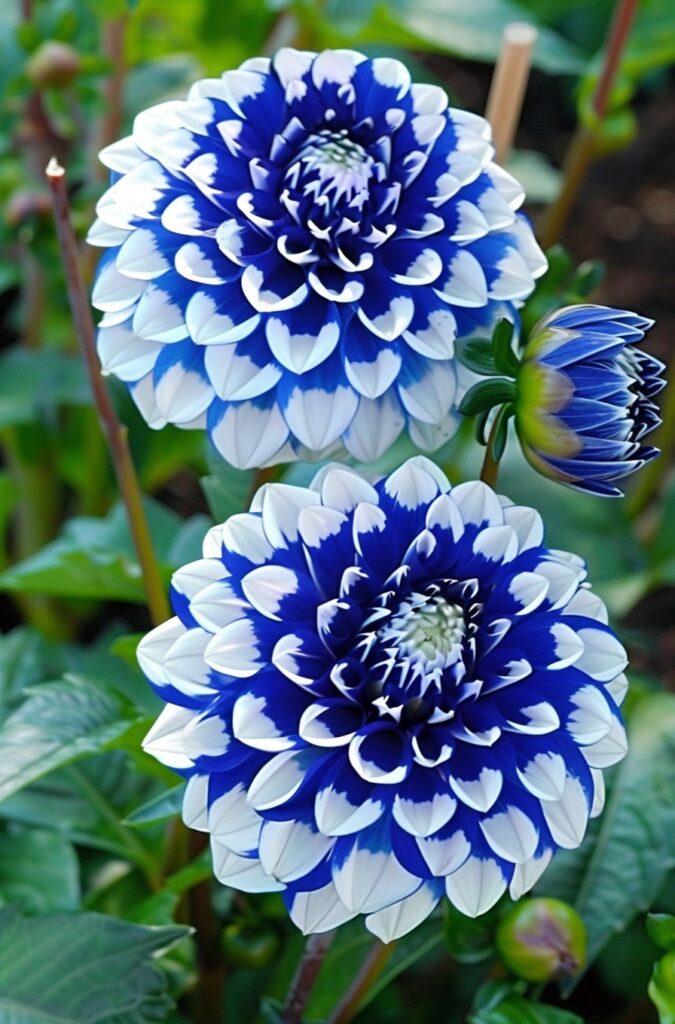
Global Spread and Cultivation
From its introduction in Europe, the dahlia’s popularity spread rapidly. Botanists, horticulturists, and flower enthusiasts across the continent were captivated by the plant’s unique beauty and adaptability. The 19th century saw a boom in dahlia cultivation, with breeders in England, the Netherlands, and other European countries developing countless new varieties.
As European powers expanded their colonial reach, dahlias traveled even further. They were introduced to gardens in Asia, Africa, and beyond, adapting to diverse climates and becoming beloved fixtures in gardens worldwide. This global journey transformed the dahlia from a regional curiosity to an international horticultural sensation.
The Symbolism and Cultural Significance of Dahlias
Elegance and Dignity in Floral Language
In the Victorian era’s elaborate language of flowers, dahlias came to symbolize elegance and dignity. Their symmetrical form and regal appearance made them perfect embodiments of these noble qualities. This association has persisted, with dahlias often being chosen for formal gardens and sophisticated floral arrangements.
The dahlia’s representation of dignity extends beyond mere appearance. It speaks to an inner grace and composure, qualities that resonate deeply with many cultures. In modern times, gifting dahlias can be seen as a gesture of respect and admiration, acknowledging the recipient’s grace under pressure or dignified bearing.

Creativity and Individuality
The vast array of dahlia shapes, sizes, and colors has led to their association with creativity and individual expression. Like an artist’s palette, dahlias offer endless possibilities for creative combinations in gardens and floral design. This diversity mirrors human creativity, reminding us of the infinite ways we can express ourselves.
Dahlias encourage us to embrace our unique qualities. Just as each dahlia variety has its distinct charm, individuals are encouraged to celebrate their personal traits and talents. This symbolism of individuality makes dahlias particularly meaningful in contexts that celebrate personal achievements or milestones.
Strength and Resilience
Despite their delicate appearance, dahlias are remarkably resilient plants. They can thrive in various conditions and bounce back from adversity, symbolizing inner strength and perseverance. This quality makes them powerful metaphors for human resilience in the face of life’s challenges.
Gardeners often share stories of dahlias surviving harsh winters or reblooming after neglect, further cementing their reputation as symbols of endurance. These tales inspire people to find strength within themselves, much like the dahlia draws nourishment from its tubers to produce stunning blooms.
Cultural Significance Around the World
Different cultures have embraced dahlias in unique ways, integrating them into local traditions and symbolism. In Mexico, the dahlia’s native land, it holds a place of honor as the national flower. This designation recognizes not only the plant’s beauty but also its historical and cultural importance to the nation.

In other parts of the world, dahlias have been adopted into various cultural practices. For example, in some European countries, dahlias are popular in autumnal festivals, symbolizing the last burst of color before winter. In Japan, the dahlia has been incorporated into the art of ikebana, the traditional practice of flower arrangement, where its structural form is highly valued.
The Art and Science of Dahlia Cultivation
Understanding Dahlia Varieties
The world of dahlias is vast and varied, with thousands of registered cultivars. These varieties are typically categorized based on their flower form, size, and growing characteristics. Understanding these classifications is crucial for both novice gardeners and experienced horticulturists.
Flower forms range from simple single blooms to complex fully double flowers. Some popular types include cactus dahlias with their spiky petals, decorative dahlias with their full, rounded form, and pom-pom dahlias with their perfectly spherical shape. Each type offers unique aesthetic qualities and growing challenges.
Size categories span from miniature dahlias, perfect for container gardening, to giant varieties that can produce blooms up to 30 centimeters in diameter. This diversity allows gardeners to choose dahlias that fit their specific space and design needs.
Soil Preparation and Planting
Successful dahlia cultivation begins with proper soil preparation. Dahlias thrive in well-draining, nutrient-rich soil. Gardeners often amend their soil with organic matter such as compost to improve its structure and fertility. The ideal pH range for dahlias is slightly acidic to neutral, typically between 6.0 and 7.0.

Planting techniques vary depending on the climate and the specific dahlia variety. In most regions, dahlias are planted in spring after the danger of frost has passed. The tubers are typically planted about 10-15 centimeters deep, with the growing tips pointing upward. Proper spacing is crucial to ensure good air circulation and prevent disease.
Watering and Fertilization Strategies
Dahlias have specific water requirements that change throughout their growing season. Initially, they need moderate watering to establish root systems. As they grow and develop buds, their water needs increase. However, overwatering can lead to tuber rot, so finding the right balance is crucial.
Fertilization plays a key role in producing healthy plants and abundant blooms. A balanced fertilizer is typically applied at planting time, with additional feedings throughout the growing season. Many experienced growers use a low-nitrogen, high-potassium fertilizer to promote flower production rather than excessive leaf growth.

Pest Management and Disease Control
Like all plants, dahlias are susceptible to various pests and diseases. Common pests include aphids, spider mites, and earwigs. Implementing integrated pest management strategies, such as encouraging beneficial insects and using organic pesticides when necessary, can help keep these problems in check.
Fungal diseases like powdery mildew and botrytis can affect dahlias, especially in humid conditions. Proper spacing, good air circulation, and avoiding overhead watering can help prevent these issues. Early detection and treatment are key to managing any disease outbreaks.
Pruning and Support Techniques
Pruning is an essential aspect of dahlia care, helping to shape the plant and promote better flowering. Pinching out the growing tips when plants are young encourages bushier growth. As the plants mature, removing side buds can result in larger, more impressive blooms on the main stems.
Many dahlia varieties, especially taller ones, require support to prevent wind damage and stem breakage. Stakes, cages, or trellises can be used to provide this support. Proper staking not only protects the plants but also allows for better display of the blooms.

The Role of Dahlias in Garden Design and Landscaping
Creating Focal Points with Dahlias
Dahlias have an unparalleled ability to serve as focal points in garden design. Their bold colors and striking forms naturally draw the eye, making them perfect for creating visual anchors in a landscape. Designers often use large dahlia varieties as centerpieces in flower beds or as standout features in border plantings.
The strategic placement of dahlias can guide the viewer’s gaze through a garden, creating a sense of flow and direction. For example, a row of tall dahlias can form a living wall, separating different garden areas while providing a dramatic backdrop for shorter plants.
Companion Planting with Dahlias
Companion planting with dahlias involves selecting plants that not only complement their appearance but also contribute to their health and growth. Low-growing annuals or perennials can be planted around the base of dahlias to cover the sometimes bare lower stems and create a fuller, more lush appearance.
Plants with contrasting foliage, such as ornamental grasses or ferns, can enhance the visual impact of dahlias. Additionally, incorporating plants that attract beneficial insects, like marigolds or cosmos, can help with natural pest control in the dahlia bed.

Dahlias in Container Gardens
Container gardening with dahlias has gained popularity, especially in urban settings or for those with limited garden space. Smaller dahlia varieties are particularly well-suited for containers, allowing gardeners to enjoy these beautiful flowers on patios, balconies, or even indoors.
When designing container gardens with dahlias, consider factors like container size, drainage, and the potential need for support structures. Mixed container plantings can create stunning displays, combining dahlias with trailing plants and complementary flowers for a diverse and dynamic arrangement.
Color Theory and Dahlia Selection
Understanding color theory is crucial when incorporating dahlias into garden design. The wide range of dahlia colors allows for endless possibilities in creating color schemes. Monochromatic designs using different shades of the same color can create a sophisticated, harmonious look. Conversely, complementary color pairings, such as purple dahlias with yellow companions, can produce vibrant, eye-catching displays.
Consider the overall mood and style of the garden when selecting dahlia colors. Soft pastels can contribute to a romantic, cottage garden feel, while bold, bright colors might be more suitable for a modern or tropical-inspired landscape.
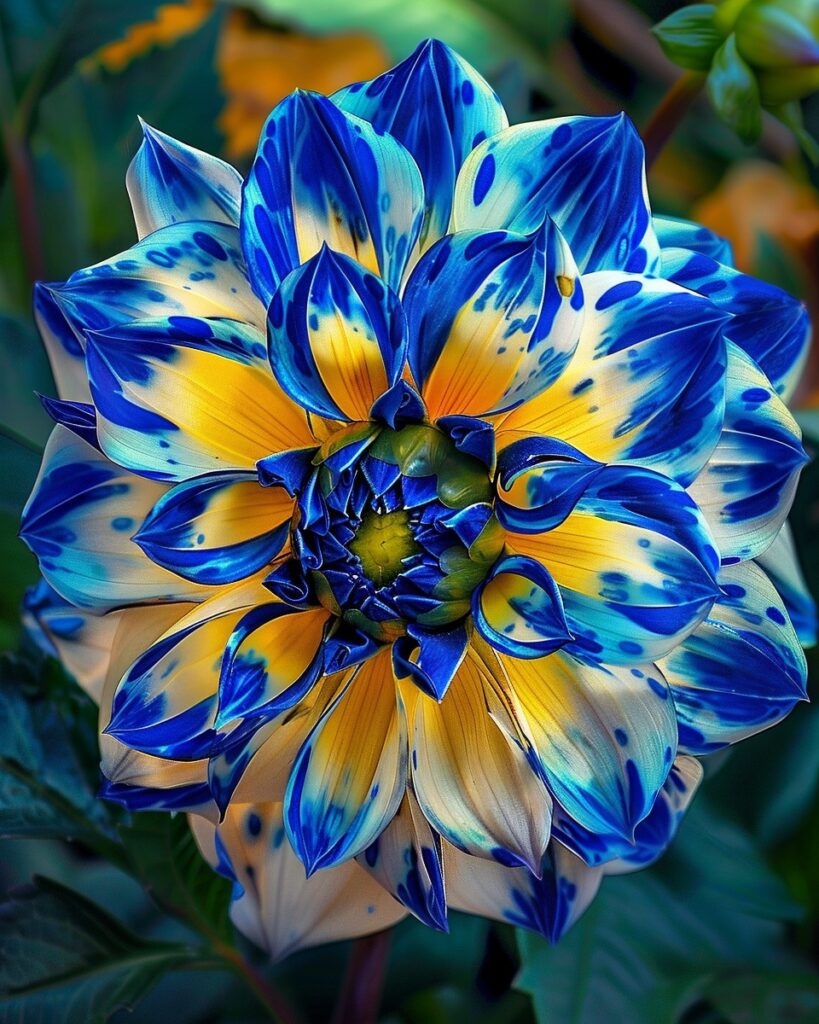
Dahlias in Cut Flower Gardens
Dahlias are prized in cut flower gardens for their long-lasting blooms and diverse forms. Planning a cut flower garden with dahlias involves selecting varieties that produce an abundance of stems and have good vase life. Staggering planting times can ensure a continuous supply of blooms throughout the growing season.
When designing a cut flower garden, consider factors like ease of access for harvesting and the logistics of moving between plants. Incorporating dahlias with different bloom times and complementary filler flowers can result in a versatile cutting garden that provides material for various floral arrangements.
Dahlias in Art and Popular Culture
Dahlias in Visual Arts
Throughout history, dahlias have been a favored subject for artists across various mediums. Painters have been particularly drawn to the flower’s intricate structure and vibrant colors. From the detailed botanical illustrations of the 19th century to modern abstract interpretations, dahlias have inspired countless works of art.

In photography, dahlias offer endless possibilities for exploring color, form, and light. Close-up images of dahlia blooms often reveal intricate patterns and textures that are not immediately apparent to the naked eye. These photographs not only celebrate the beauty of dahlias but also invite viewers to see the natural world from a new perspective.
Dahlias in Literature and Poetry
The beauty and symbolism of dahlias have made them a recurring motif in literature and poetry. Writers have used dahlias as metaphors for human emotions, life cycles, and the transient nature of beauty. In poetry, the dahlia’s diverse forms and colors provide rich imagery for exploring themes of individuality, transformation, and resilience.
Notable works featuring dahlias include poems by William Wordsworth and D.H. Lawrence, where the flowers are used to evoke feelings of nostalgia and contemplation on the passage of time. In prose, dahlias often appear in garden-themed literature, symbolizing the rewards of patience and care.
Dahlias in Fashion and Design
The influence of dahlias extends into the world of fashion and design. Textile designers have long drawn inspiration from dahlia patterns, creating fabrics that mimic the flower’s intricate petal arrangements. In fashion, dahlia-inspired designs have appeared on runways, from bold prints to delicate embroideries that capture the flower’s essence.

Interior designers often incorporate dahlia motifs in home decor, from wallpapers to upholstery fabrics. The flower’s symmetrical form lends itself well to repeating patterns, while its varied color palette allows for versatile design applications. Dahlia-inspired designs can add a touch of elegance and nature-inspired beauty to any space.
Dahlias in Cultural Festivals and Events
Many communities around the world celebrate dahlias through festivals and special events. These gatherings not only showcase the beauty of dahlias but also serve as platforms for education, competition, and community bonding. Notable examples include the National Dahlia Show in the United Kingdom and various dahlia festivals across the United States.
These events often feature competitions for the biggest, most beautiful, or most unusual dahlias. They also provide opportunities for gardeners to share knowledge, exchange tubers, and celebrate their shared passion for these flowers. Such festivals play a crucial role in preserving dahlia varieties and promoting horticultural interest among younger generations.
Dahlias in Culinary Arts
While less common, dahlias have found their way into culinary applications, reflecting a growing interest in edible flowers. The tubers of certain dahlia varieties are edible and have been compared to Jerusalem artichokes in taste and texture. Some innovative chefs have begun incorporating dahlia petals into salads or as garnishes, adding both visual appeal and a subtle flavor to dishes.

The use of dahlias in cuisine connects back to their historical roots in Mesoamerica, where they were valued for both beauty and sustenance. This culinary exploration of dahlias represents a fusion of horticultural interest and gastronomic creativity, opening new avenues for appreciating these versatile plants.
The Future of Dahlia Cultivation and Research
Genetic Research and Breeding Innovations
The field of dahlia genetics is an area of active research, with scientists working to understand the complex genetic makeup of these flowers. This research has implications not only for developing new varieties but also for improving traits like disease resistance, bloom longevity, and climate adaptability.
Advanced breeding techniques, including molecular markers and genetic engineering, are being explored to create dahlias with novel colors, forms, and growing characteristics. These innovations could lead to dahlias that are better suited to changing climate conditions or that possess entirely new aesthetic qualities.
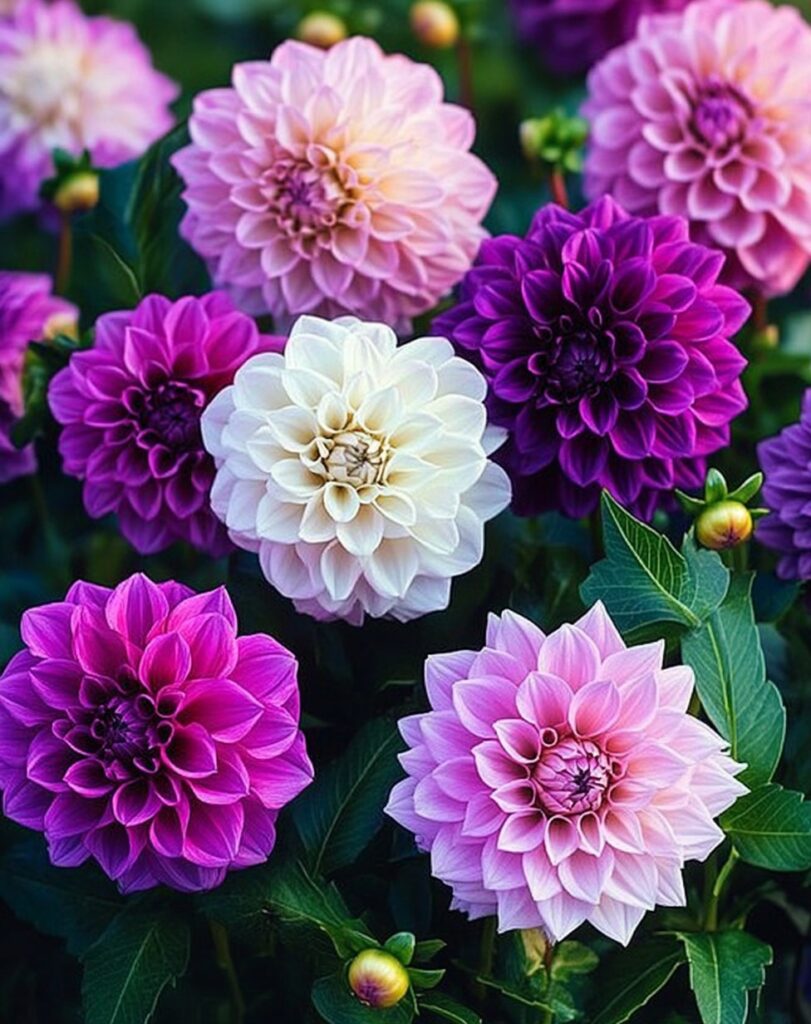
Sustainability in Dahlia Cultivation
As environmental concerns become increasingly pressing, the dahlia cultivation industry is exploring more sustainable practices. This includes developing water-efficient growing methods, reducing reliance on chemical pesticides, and implementing eco-friendly packaging for tubers and cut flowers.
Research into organic dahlia cultivation is growing, with studies focusing on natural pest control methods and organic fertilization techniques. These efforts aim to make dahlia growing more environmentally friendly while maintaining the high quality that growers and consumers expect.
Dahlias in Urban Greening Initiatives
Dahlias are finding new roles in urban greening projects. Their adaptability to container growing makes them suitable for rooftop gardens, vertical gardens, and other urban planting schemes. Cities are increasingly recognizing the value of incorporating diverse plant species, including dahlias, into urban landscapes to support biodiversity and improve aesthetic appeal.
Community dahlia gardens are emerging as a way to bring people together and beautify public spaces. These gardens serve educational purposes, teaching urban residents about plant care and the importance of green spaces in cities.

Preservation of Heirloom Varieties
With the continuous development of new dahlia varieties, there’s a growing movement to preserve heirloom and heritage dahlias. These older varieties often possess unique characteristics and historical significance. Preservation efforts involve maintaining living collections, seed banks, and encouraging gardeners to grow these traditional varieties.
The work of preserving heirloom dahlias connects modern gardeners with horticultural history and helps maintain genetic diversity within the species. This diversity is crucial for the long-term resilience of dahlias and provides a rich resource for future breeding programs.
Dahlias in Therapeutic Horticulture
The role of dahlias in therapeutic horticulture is an emerging area of interest. Gardening with dahlias is being explored as a form of therapy for various physical and mental health conditions. The process of planting, caring for, and harvesting dahlias can provide physical exercise, stress relief, and a sense of accomplishment.
Horticultural therapy programs are incorporating dahlias into their activities, recognizing the flowers’ ability to stimulate sensory experiences and promote emotional well-being. The vibrant colors and varied textures of dahlias make them particularly suitable for sensory gardens designed for individuals with special needs.
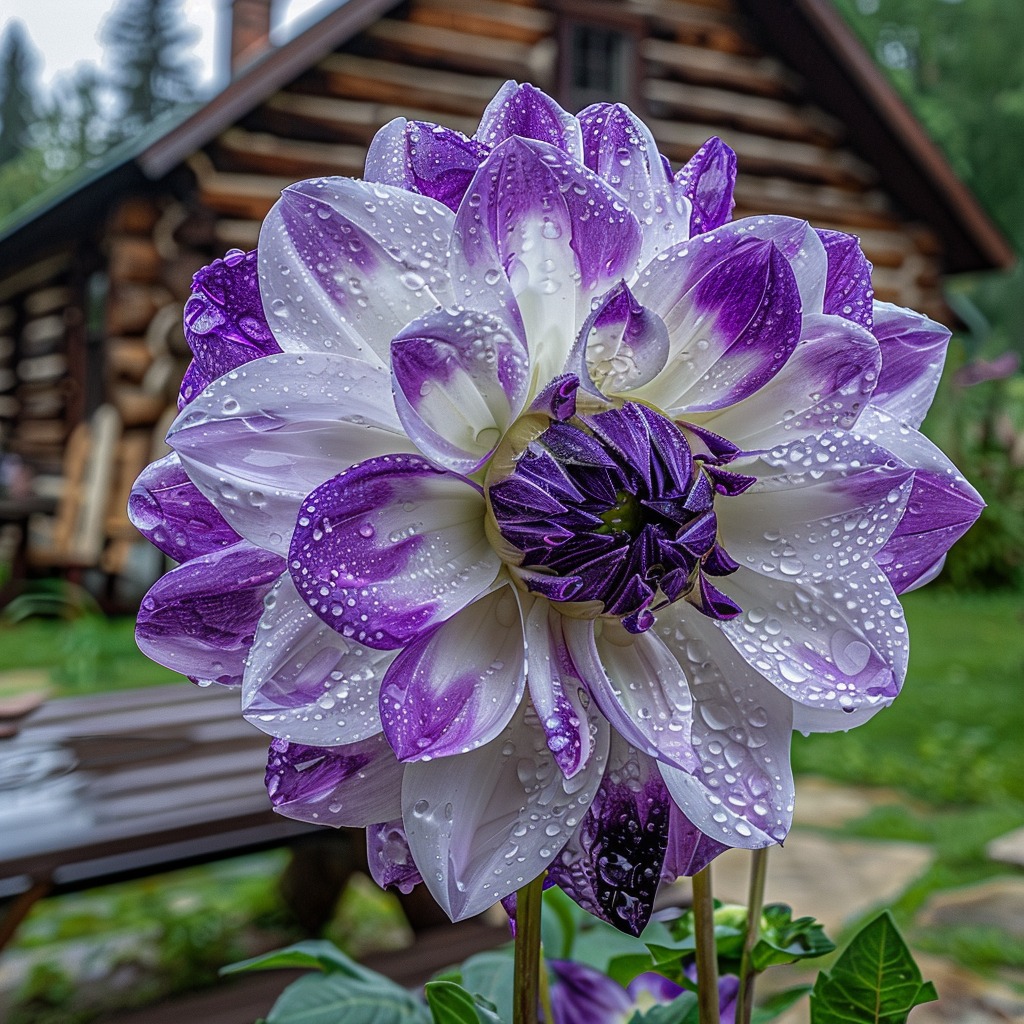
The Future of Dahlia Cultivation and Research
Genetic Research and Breeding Innovations
Genetic research in dahlias is a rapidly evolving field that aims to unravel the complexities of their genetic makeup. Scientists are delving into the genomes of various dahlia species, seeking to identify specific genes responsible for key traits such as flower color, size, shape, and resilience to diseases. With the advancement of technologies like CRISPR and molecular markers, researchers are unlocking new possibilities for breeding innovative dahlia varieties.
One significant focus of this research is enhancing disease resistance. Dahlias are susceptible to several pathogens, which can lead to substantial crop losses for commercial growers. By identifying resistant genes and incorporating them into new cultivars, scientists hope to produce dahlias that can withstand common ailments without relying heavily on chemical treatments. This not only benefits growers’ bottom lines but also aligns with growing consumer demand for sustainably produced flowers.
In addition to improving resilience against diseases, genetic research is also exploring ways to enhance bloom longevity. Many gardeners and florists are looking for dahlias that retain their beauty for longer periods, whether in the garden or as cut flowers. By understanding the biological processes that influence flower senescence, breeders can select for traits that prolong the visual appeal of dahlias, ultimately enriching the experience of those who cultivate and admire these stunning blooms.
Sustainability in Dahlia Cultivation
As environmental issues take center stage worldwide, sustainable practices in dahlia cultivation have become imperative. Growers are adopting eco-friendly techniques that reduce the ecological footprint of dahlia production. This includes innovations such as integrated pest management (IPM) strategies, where natural predators are utilized to control pest populations, minimizing the need for chemical pesticides.
Water conservation has also emerged as a priority. Dahlias, like many flowering plants, require adequate moisture for optimal growth; however, traditional irrigation methods can be wasteful. Growers are beginning to implement drip irrigation systems that deliver water directly to the roots, substantially reducing water usage. Additionally, utilizing rainwater harvesting systems can provide a sustainable source of irrigation while conserving precious resources.

Organic practices are gaining traction, with more growers turning to organic fertilizers and soil amendments to nurture their dahlias. This shift not only reduces chemical runoff into local ecosystems but also promotes healthier soils that can support diverse plant life. The commitment to sustainability resonates well with consumers increasingly seeking environmentally responsible options in their floral purchases, creating a win-win situation for both growers and buyers.
Dahlias in Urban Greening Initiatives
Urban areas are often characterized by concrete and asphalt, leading to a lack of green spaces that can benefit both residents and wildlife. Dahlias are becoming increasingly popular in urban greening initiatives due to their adaptability to container gardening and ability to thrive in various environmental conditions.
Community gardens featuring dahlias bring together residents to cultivate beautiful public spaces while fostering connections among neighbors. These gardens not only beautify the area but also provide educational opportunities on sustainable gardening practices, biodiversity, and food production. Local workshops can teach urban dwellers how to grow dahlias and other flowers, empowering them to engage more deeply with nature in their bustling surroundings.
Additionally, dahlias contribute to biodiversity in urban settings by attracting pollinators like bees and butterflies. Their vivid colors and rich nectar serve as critical resources for these creatures, which are essential for maintaining healthy ecosystems. As cities recognize the importance of integrating nature into the urban landscape, dahlias play a vital role in restoring balance and promoting ecological health in densely populated areas.
Preservation of Heirloom Varieties
While modern breeding techniques have led to the emergence of numerous exciting dahlia varieties, there is a growing movement dedicated to preserving heirloom dahlias. These older varieties often carry historical significance, showcasing a unique range of colors, forms, and fragrances that may not be found in contemporary cultivars.
Efforts to preserve heirloom dahlias involve establishing living collections in botanical gardens and nurseries, as well as seed banks that safeguard genetic material. This preservation work is crucial for maintaining genetic diversity within the dahlia species, which can be threatened by the dominance of a few commercially popular varieties.
Gardeners passionate about heritage dahlias can participate in preservation initiatives by growing and sharing these varieties within their communities. Encouraging a culture of appreciation for heirloom plants fosters a connection to horticultural history, allowing present and future generations to enjoy the unique beauty and characteristics of these cherished flowers.

Furthermore, heirloom dahlias can serve as a resource for future breeding programs. By studying their genetics and traits, breeders can develop new cultivars that combine the best features of modern and heirloom varieties, ultimately enriching the dahlia gene pool and ensuring greater resilience and adaptability in changing environments.
Dahlias in Therapeutic Horticulture
The therapeutic potential of dahlias is a captivating area of research and practice. Gardening is known to positively impact mental and physical well-being, and the inclusion of dahlias in therapeutic horticulture programs is gaining recognition for their ability to enhance these benefits. Engaging with dahlias provides individuals with an opportunity to connect with nature, which can be profoundly healing.
Horticultural therapy programs often incorporate activities involving dahlias, such as planting, nurturing, and harvesting. These tasks require physical movement, which can improve mobility and coordination, particularly beneficial for individuals recovering from injuries or dealing with chronic illnesses. The act of caring for plants also instills a sense of purpose and accomplishment, boosting self-esteem and motivation.
Moreover, dahlias have sensory appeal; their vibrant colors, varied textures, and delightful fragrances can stimulate the senses and create immersive experiences for participants. Sensory gardens designed for individuals with special needs often feature dahlias to engage visitors fully, providing opportunities for tactile exploration and visual enjoyment. This engagement can evoke positive emotions and memories, making it a valuable tool in therapeutic settings.
Programs utilizing dahlias in therapeutic horticulture continue to grow in popularity, highlighting the profound impact that nature-based interventions can have on overall well-being. As awareness of the mental health benefits of gardening increases, dahlias will likely play a prominent role in fostering holistic healing practices.
Conclusion
Dahlias are more than just stunning flowers; they symbolize resilience, beauty, and the interconnectedness of nature and humanity. As we explore their cultural significance, contributions to fashion and design, roles in culinary arts, and influences on community building, it becomes clear that dahlias hold a special place in our hearts and societies.
Looking to the future, ongoing research into genetic advancements, sustainable practices, and the preservation of heirloom varieties promises to ensure the continued success and relevance of dahlias in our lives. Furthermore, their incorporation into urban greening initiatives and therapeutic horticulture highlights the multi-faceted value these flowers bring to our environment and well-being.
Through our collective efforts to appreciate, cultivate, and preserve dahlias, we foster a deeper connection with nature and strengthen the bonds within our communities. As we nurture these remarkable flowers, we celebrate the beauty and resilience of life itself.


